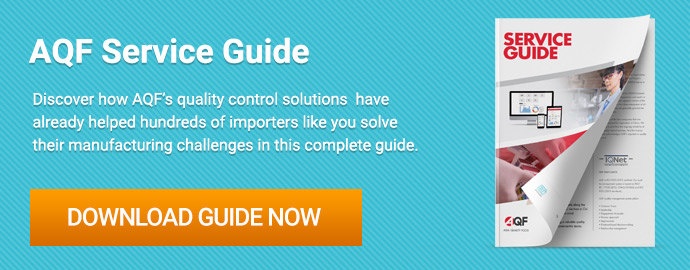 When asked what is their greatest manufacturing challenge, 57 percent of all importers visiting our website (2700 out of 4719 respondents, as of April 2018) answered with “managing product quality”.
When asked what is their greatest manufacturing challenge, 57 percent of all importers visiting our website (2700 out of 4719 respondents, as of April 2018) answered with “managing product quality”.
Product defects are a well-known, and inevitable, consequence of mass manufacturing. No factory is perfect. And almost every single order of goods produced in every single factory in the world contains at least a few product defects, no matter how minor or insignificant.
But for many importers, relatively serious quality defects appear in unacceptable quantities, leading to shipping delays, dissatisfied customers, product returns, and in some cases, legal repercussions and product recalls. These problems are enough to bring many importers near the brink of despair, as they grapple with the pressures of trying to manage a difficult supplier from half a world away.
This guide offers you a straightforward, three-stage process for limiting quality defects in the products you import. By the end, you’ll be know how to:
- Qualify potential suppliers
- Establish a healthy relationship with a supplier you’ll work with
- Clearly set your expectations for factory workers and QC staff
- Verify your expectations through various QC inspection options, and
- Address quality problems and prevent them in future shipments
By following the steps presented in this eBook, you’ll be on the path to manufacturing success and excellence. So let’s get started! Read along, email a PDF to yourself for later by filling out the form on the right or click the links below to jump to the section that interests you most:
Stage 1: Prevent product defects before production begins
QC professionals sometimes disagree on a number of concepts, such as how to implement Six Sigma principles or the best methods for testing various products. But if there’s one point they do tend to agree on, it’s that quality is built into a product, not added after the fact. Production processes involved, parts & materials used and the skill & experience level of factory staff are the primary determinants of the quality level of finished goods.
Quality defects and other issues are generally much easier and cost-effective to address through prevention than through corrective action. And the best time to begin preventing product defects is during the sourcing process.
Be upfront with potential suppliers about your order volume
A common mistake importers make when they first start their search for suppliers is misrepresenting themselves in telling vendors and factories only what they think these suppliers want to hear. They might say that their first order will be small, but subsequent orders will be larger and frequent. In doing so, importers often think that prospective suppliers will be more eager to work with them and will offer more competitive pricing to try to win their business.
But the truth is, although suppliers value high order quantities and a steady stream of business, they know that talk is cheap and that promises like these typically don’t materialize. Beginning production with a small trial order is wise. It’s not a good idea, however, to begin your relationship with a supplier by grossly overestimating the volume of business you’ll provide them.
Suppliers are used to getting a lot of inquiries from importers overseas that promise a lot of future value. You’ll stand out as honest, and suppliers will more likely receive you favorably if you’re realistic with order volume from the beginning.
Don’t bargain too hard on price when negotiating with suppliers
You’ve probably heard the age-old saying, “you get what you pay for”. And when it comes to common mistakes importers make, haggling too aggressively is near the top of the list of reasons for quality defects and other product issues down the road (related: 3 Tips for Getting the Best Price from Suppliers). Remember, suppliers need to make money on the transaction, too. And when a customer demands a lower price for goods, the supplier is usually forced to make cuts elsewhere to recoup the difference, typically at the expense of the quality of parts and materials used in manufacturing.
A better approach to reaching an agreeable price for your product when negotiating with suppliers and vendors is to offer potential suppliers a target price directly. Some importers fear revealing the amount they expect to pay because they worry it leaves them little room to negotiate. But pricing for most products doesn’t vary significantly between different suppliers for a similar level of quality. And giving suppliers an estimate of what you expect to pay saves time and helps set the quality standard early.
Not sure what’s considered a “fair” price for your product? Most importers with a bit of experience in a particular product category are already familiar with the going rate for their product and the costs of related parts & materials. But if you’re not sure what target price to set, here are a few tips to help:
- Get comparable price quotes from multiple suppliers. This is one of the easiest ways to see what competitive suppliers are offering.
- Ask prospective suppliers for a bill of materials (BoM). The BoM shows a breakdown of raw materials and components and the quantities of each needed for a product.
- Ask prospective suppliers for itemized pricing. Itemized pricing can show you the cost of parts and materials needed for manufacturing your product. But remember that prices for some materials and commodities, such as copper, can change month by month.
The way you negotiate with suppliers early on will have a major impact on your relationship with the one you ultimately choose to work with (related: Top 5 Tips for Negotiating with Chinese Factories). And it’s much easier to minimize product defects and other quality issues when you have a strong relationship with your supplier.
Vetting potential suppliers by auditing their facilities
Many importers consider auditing their supplier’s factory to be the final step in the sourcing process. Some audits are industry-specific, such as good manufacturing practices (GMP) audits. Others are meant to probe into a factory’s conditions and treatment of workers, such as a social compliance audit following local law or a particular brand or retailer framework.
But the most common audit importers perform—and the one that focuses on quality—is an audit of a factory’s quality management systems (QMS). This audit, sometimes called a “supplier review”, often follows the ISO9001 standard and covers a number of areas within a factory, including:
- Checking machine and equipment maintenance and calibration
- Internal QC procedures and related personnel, and
- Engineering & design capabilities
 The results of auditing a potential supplier’s QMS help you to anticipate potential quality problems or risks before beginning production. For example, if the factory’s equipment is in disrepair, you’re probably not going to see consistently acceptable quality throughout an order. And if the factory’s QC staff have no clear procedures and lack adequate training, you probably won’t want to rely on them for inspecting your product before shipping.
The results of auditing a potential supplier’s QMS help you to anticipate potential quality problems or risks before beginning production. For example, if the factory’s equipment is in disrepair, you’re probably not going to see consistently acceptable quality throughout an order. And if the factory’s QC staff have no clear procedures and lack adequate training, you probably won’t want to rely on them for inspecting your product before shipping.
You might even find a supplier that’s presenting itself as a factory doesn’t actually maintain a factory but, instead, is subcontracting orders to factories. Audits help you to avoid these kinds of issues before they cause unnecessary delays, increased costs or customer dissatisfaction.
Establishing a golden sample to set the quality standard
Obtaining product samples from different suppliers you’re considering is another step that some experienced importers choose to take before deciding to work with a particular supplier. Other importers may wait until after they’ve chosen a supplier to begin perfecting a product sample. Regardless of when you choose to request product samples, obtaining and approving one can be paramount to setting your expectations for quality and other product requirements.
An approved sample, sometimes called a “golden” sample, is a factory’s attempt to manufacture a product that closely fits your requirements and specifications. It’s important to establish a sample that serves as a model for mass production early, especially when your product is complicated.
A golden sample clarifies the parts and materials needed for your product, such as the quality of leather used in manufacturing a bag or the speaker used in a mobile phone. A golden sample also serves as a clear standard for comparison for factory workers and any QC staff that may be inspecting the goods as they come off the production line (related: How Importers Minimize Product Defects by Establishing a Golden Sample).
Reviewing and testing golden samples
It’s almost always a good idea to review a product sample and, if necessary, send it to a qualified laboratory for testing before approving it.
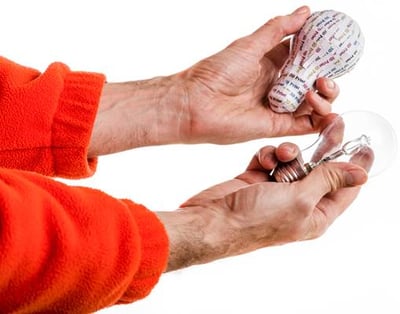 Reviewing your product sample may be as simple as checking dimensions and verifying Pantone colors. But many importers find they need to send their sample to a certified lab for testing certain attributes of their product.
Reviewing your product sample may be as simple as checking dimensions and verifying Pantone colors. But many importers find they need to send their sample to a certified lab for testing certain attributes of their product.
If you’re importing power tools, for example, you may want a lab to conduct benchmark testing that compares performance of your sample with that of competitive products. And it’s very common for importers of jewelry to send samples to a lab for testing material composition and purity. Importers of some products, such as food and pharmaceuticals, will insist on lab testing samples of their products to verify that they meet safety regulations of their market of sale.
Whether you should require lab testing for your product samples will largely depend upon:
- Your product’s intended application
- Any claims used in promoting your product (e.g. battery life, water resistance)
- The product’s sale price (testing is often more appropriate for higher-end products)
- Any regulations governing your product, and
- Your budget
Only you can decide what testing, if any, is needed for your product. If you’re unsure, a QC professional or lab that has experience with your product type can often tell you which tests are relevant and the estimated cost and return time for each.
Handling golden samples
While most experienced importers are familiar with the value of obtaining and approving product samples, few put much thought into how to properly handle and keep track of them. But the way you handle golden samples is important because factory staff might misplace an approved sample or confuse it with an unapproved sample (related: 3 Must-Do Procedures for Handling Golden Samples for Manufacturing). Factories sometimes also deliberately tamper with an golden sample to interfere with the product inspection process, especially when an outside third-party is expected to perform the inspection.
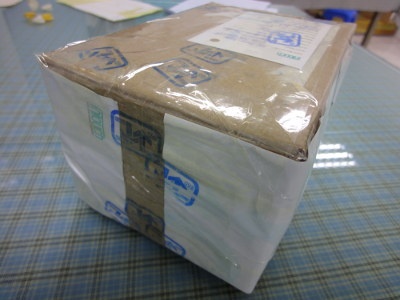 The main danger in someone mishandling your approved samples is that defects and nonconformities can occur in the finished goods when factory workers refer to the wrong sample for production. For example, if your latest approved sample reflects a recent change you made to the shape of a sneaker you’re manufacturing in China, factory workers may not produce the shoe to meet specifications without having your sample on hand. This can be especially problematic for footwear with injection-molded parts, as the whole order will likely need to be reproduced from scratch.
The main danger in someone mishandling your approved samples is that defects and nonconformities can occur in the finished goods when factory workers refer to the wrong sample for production. For example, if your latest approved sample reflects a recent change you made to the shape of a sneaker you’re manufacturing in China, factory workers may not produce the shoe to meet specifications without having your sample on hand. This can be especially problematic for footwear with injection-molded parts, as the whole order will likely need to be reproduced from scratch.
The other main concern with mishandling product samples is that any QC staff that may be inspecting your product won’t be using the right standard for QC inspection if they’re comparing the wrong sample to mass-produced units. When you see inspection results that don’t accurately represent the true situation at the factory, you’re more likely to make a misinformed decision about whether to ship that order.
Here are some easy steps to prevent issues related to your approved samples:
- Establish two identical approved samples—one to send to the factory and the other to send to your inspection team (if you require outside inspection). This ensures that the inspector still has a valid sample to follow in case the one at the factory isn’t available or has been tampered with.
- Sign and date both samples so that there’s no doubt as to the authenticity of both. The date helps factory and QC inspection staff identify the most recent sample in cases where you’ve revised it over time.
- Seal each sample in it’s own carton for shipping. Properly sealing the samples helps prevent tampering (related: How To Seal Product Samples).
Send one sample back to your supplier or factory before mass production begins, so they have time to verify your requirements and ask for clarification as needed. Send the second sample to your QC inspection team to ensure they receive it at least 1-2 days before the anticipated inspection date. Your golden samples can help you prevent product defects and catch any that might appear in your product before shipping.
Explicitly stating your quality expectations in a QC checklist
A QC checklist, or inspection criteria sheet (ICS), is one of the most valuable documents for helping you minimize quality defects in your products. Checklists convey importers’ product requirements to their supplier and inspection criteria to QC staff. There are several key areas that most checklists should address, including:
- Product requirements
- Packaging requirements
- On-site tests and checks
- Defect classification
 Product requirements typically include various characteristics of an item, such as color, dimensions and material. The workers manufacturing your product and the inspectors checking it need these details to ensure the item meets specifications. You could easily end up receiving defective or noncomforming goods if the factory has to guess your expectations.
Product requirements typically include various characteristics of an item, such as color, dimensions and material. The workers manufacturing your product and the inspectors checking it need these details to ensure the item meets specifications. You could easily end up receiving defective or noncomforming goods if the factory has to guess your expectations.
Packaging requirements commonly include points about carton material, assortment method, labeling and others. Aside from protecting your product during transit, packaging can also play a large part in determining how customers perceive your product. Brands and retailers often have their own specific requirements for packaging and labeling, such as Amazon.com’s Fulfillment by Amazon (FBA) requirements. Your distributors could refuse to stock your product if your supplier fails to meet packaging requirements.
QC staff normally perform some on-site tests and checks on a product before the factory ships an order. These tend to vary considerably between different product types. Hi-pot testing, for example, is an important safety test for most consumer electronics. A fit check and stitch density check are common for garments, footwear and other softlines goods. And load testing is often included in product inspection for furniture items.
If you have extensive experience manufacturing your product, you’re probably already familiar with what tests and checks are relevant and vital for it. If not, a QC professional that has worked with similar products can often help.
Whatever tests and checks you require for your product, if your supplier or QC inspection staff aren’t aware of them, you can’t be sure whether your product meets your safety, function or performance standards. When stating tests and checks in your QC checklist, be sure to include the following with each:
- Test or check procedure – different QC personnel may conduct the same tests using different methods.
- Any equipment required – testing results can be unreliable without the use of proper tools or equipment.
- Who will provide the equipment – confusion often results when factory staff or inspectors don’t know which party is responsible for making equipment available during inspection.
These may seem like minute details to explicitly document. But without conducting the appropriate testing for your product you could end up finding serious quality problems in your finished goods (related: Prevent Quality Defects in Your Products by Clarifying Requirements).
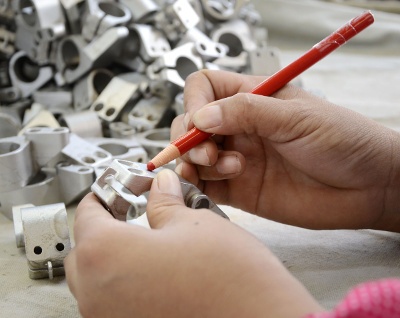 Classifying product defects makes it easier for you and your supplier to interpret inspection results and determine whether an order meets your quality standards. Sorting defects by class also allows for clearer acceptance sampling with acceptable quality levels (AQL), a method used in most product inspections (related: The Importer’s Guide to Managing Product Quality with AQL [eBook]). QC professionals typically classify product defects into one of the following three types in order of severity:
Classifying product defects makes it easier for you and your supplier to interpret inspection results and determine whether an order meets your quality standards. Sorting defects by class also allows for clearer acceptance sampling with acceptable quality levels (AQL), a method used in most product inspections (related: The Importer’s Guide to Managing Product Quality with AQL [eBook]). QC professionals typically classify product defects into one of the following three types in order of severity:
- Minor defects – are unacceptable in high quantities but generally won’t result in product returns.
- Major defects – would likely result in product returns but don’t pose a safety risk to the user.
- Critical defects – violate regulations or pose a threat to user safety.
Since importers often have a different tolerance for each of the three defect types above, the maximum number of defects allowed will also vary for each type. These different limits will impact the result of inspection and the importer’s decision to accept or reject the order. By clearly separating known product defects by defect type in your QC checklist, you can improve the accuracy of your inspection reports and address product defects found.
Working with your supplier and inspection team to develop and maintain your checklist
When novice importers first begin working with a supplier and any QC team, they often know to provide many of the important details of a QC checklist to both parties. But they sometimes provide these details too late or don’t collaborate with suppliers and QC professionals when developing requirements and inspection standards.
When you provide your requirements too late you risk having your supplier manufacture a product that doesn’t meet specifications or having your inspectors assess the product using incorrect criteria. And by providing production requirements and inspection standards without asking your supplier and inspectors for feedback, you could be setting unreasonable expectations or missing valuable insight that could improve the product or inspection method.
Collaborate with both parties when developing a QC checklist for your product, and do it early, well before mass production begins. This way, everyone is clear on expectations and has the opportunity to refine and improve standards as needed. Working together also has the added benefit of keeping everyone informed of any updates to standards, so no one is surprised by a sudden change that might lead to nonconformances.
Other documents that serve to clarify your quality expectations
There are a couple other documents where you can clarify your expectations effectively, aside from the QC checklist (related: 5 Essentials of a QC Checklist [eBook]). The most common document most importers are very familiar with is the purchase order (PO). Most POs contain a lot of the same basic information, such as item numbers, quantities, pricing and payment terms.
 But in the same way you likely already clarify these basic order requirements in your PO, you could also include important details related to product quality and inspection. Many importers use their PO as an opportunity to clarify their requirement for pre-shipment inspection. Other importers will go one step further, specifying that they’ll require their supplier to pay a financial penalty for each defect of a certain type found in the finished goods.
But in the same way you likely already clarify these basic order requirements in your PO, you could also include important details related to product quality and inspection. Many importers use their PO as an opportunity to clarify their requirement for pre-shipment inspection. Other importers will go one step further, specifying that they’ll require their supplier to pay a financial penalty for each defect of a certain type found in the finished goods.
Another document more common among larger importers is a type legal contract sometimes called a “vendor agreement” or “vendor guide”. A vendor agreement tends to be a much longer document than a typical PO. It often contains product quality requirements and procedures, as well as standards for social compliance, in Walmart’s case. Although it can be difficult to legally enforce a manufacturing contract in some countries, like China, such an agreement is still valuable in ensuring your supplier has and understands your expectations.
Clarifying expectations and beginning a relationship with your supplier on even footing are the main ways to prevent quality defects in your shipments. But these are just the beginning. How do you set about finding defects in your products, especially when your supplier’s factory is located halfway around the world?
⇑ Back to Top
Stage 2: Identify product defects that appear in production with QC inspection
Once you’ve taken steps toward setting expectations and fostering an open and honest relationship with your supplier, you’ll have eliminated the vast majority of the problems that typically cause product defects in manufacturing. The next stage is conducting due diligence to identify any quality defects that remain shortly before, during and after mass production.
Most importers are familiar with the need to perform pre-shipment QC inspection on their finished goods. Some are also aware of the various options available for who they might want to check their products (related: 4 Ways Importers Conduct Product Inspection [eBook]). But fewer importers know that product inspection offers different insight when carried out at different times. And while inspection most often occurs when the product is finished and packaged, it’s often necessary for importers to inspect at other times as well.
Incoming quality control
When it comes to checking for defects and other quality issues, there’s no better time to start than by inspecting the raw materials and parts your supplier plans to use in your product before manufacturing begins. During a process called incoming quality control (IQC), QC staff check these materials and parts shortly after the factory receives them to ensure they meet specifications and quality standards.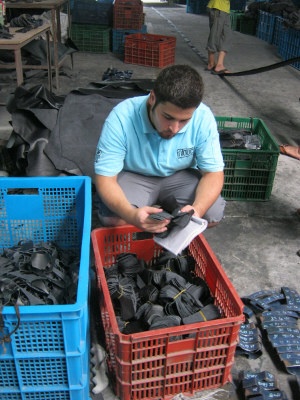
Most importers tend to rely on their supplier to perform these checks before beginning mass production. But you may feel compelled to proactively arrange IQC yourself, particularly in cases where:
- You’re working with a supplier for the first time and want greater assurance that the factory will use the right materials in your product
- You have a history of receiving goods containing substandard components or materials from a particular supplier (e.g. incorrect fabric used in a garment or a movement in a timepiece that’s lower quality than specified)
- You need to verify rare or expensive materials and components that you require for your product (e.g. high-end jewelry or electronics with internationally-sourced components)
Other times, it may be necessary to inspect raw material to verify that it’s appropriately stored and maintained. For example, it’s important to properly store and cure lumber used in furniture and other wooden products to prevent warping, which can dramatically affect the quality of the finished product. If you didn’t already conduct a QMS audit during the sourcing process (see Stage 1), inspecting the raw material offers this insight.
First article inspection
Some importers insist on inspecting the first unit—or a unit from the first lot—that comes off the line after mass production starts. Often called first article inspection (FAI), the process for inspecting one of these first units usually includes checking a set of critical characteristics of the product to evaluate production. You might check product dimensions or verify proper calibration of tools and equipment used in mass production, for example.
The process for reviewing and approving a preproduction sample (see Stage 1) differs in purpose from FAI and in how each unit is made. Whereas an engineer in an R&D department typically manufactures preproduction samples, the unit checked by FAI comes directly from a factory’s own mass production. FAI provides insight into the quality and conformance of what the actual production line can manufacture on a mass scale.
FAI is normally a requirement stipulated by the PO between the supplier and the customer. These inspections are most common among military subcontractors but can also be relevant in the civilian sector for importers working with certain product types, such as medical devices and parts in the automotive and aerospace industries.
During production inspection
Some QC experts consider during production inspection to be the “most underrated tool” available to importers. Known by many in the industry simply as “DUPRO”, during production inspection generally occurs when some quantity of units come off the production line with as much as 80 percent finished.
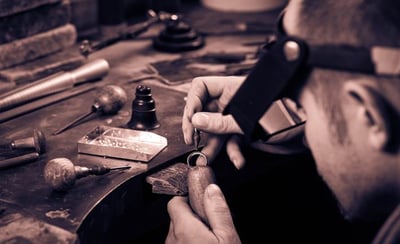 The main benefit of DUPRO is that it gives you the opportunity to address any quality issues (see Stage 3) before they affect the majority of the order. An added benefit of addressing problems early is that you’re less likely to encounter production or shipping delays caused by discovering these problems closer to deadlines, like your exit-factory date.
The main benefit of DUPRO is that it gives you the opportunity to address any quality issues (see Stage 3) before they affect the majority of the order. An added benefit of addressing problems early is that you’re less likely to encounter production or shipping delays caused by discovering these problems closer to deadlines, like your exit-factory date.
It’s almost always helpful to have the extra transparency that DUPRO provides. But you especially might want to consider inspecting during production if:
- You’ve found unacceptable product defects or other quality issues in the finished goods that were introduced earlier in production in previous orders from the same supplier (e.g. loose-fitting components on a tote bag)
- Your product contains many different parts (e.g. mobile phones)
- Your product requires several very different production processes (e.g. enamel-coated skillets)
Final inspection
The most common time to perform inspection, and the one most importers are familiar with, is at the final stages of manufacturing when more than 80 percent of the goods are finished and packaged. The main benefits of final inspection are that it gives you the opportunity to inspect product packaging & assortment and let’s you check a more random sample than earlier inspection typically allows.
Most QC professionals recommend final inspection at a minimum, as it’s often the last chance you’ll have to thoroughly check an order before it leaves the factory. It’s usually more difficult to address product defects found when the order is already completed and packaged than when production is still ongoing. But it’s still more effective than waiting until the order ships and hoping for the best.
Monitoring container loading
Among the least common times to conduct inspection is when the goods are finished, packaged and being loaded into containers for shipping. Most importers don’t need this level of oversight unless they:
- Require a specific loading plan
- Require inspection of the container to validate a letter of credit
- Have had previous issues with damage occurring during transit, such as cartons being stacked too high and crushing those beneath
Inspecting during container loading is typically more focused on reporting how the cartons are loaded and in what quantities than on the quality of the products themselves. Though it’s common for inspectors to check a small sample of units.
When to inspect your order is entirely up to you and your supplier. Most importers will receive the greatest benefit from conducting DUPRO and final inspection. But your product type, past experience with your supplier and QC budget will likely be the key deciding factors for which timing is best for you. You might even consider keeping an inspector at the factory on an ongoing basis, a process known as production monitoring, if you have serious quality concerns throughout production.
Whatever your circumstances, identifying quality defects as early as possible with QC inspection is an important step in limiting them.
⇑ Back to Top
Stage 3: Address product defects found and prevent their recurrence
Now that you’ve found any defects that made their way into your products, despite prior efforts to prevent them, how do you approach addressing product defects?
There are a number of different corrective and preventative actions importers can take to remedy product defects in their finished goods and prevent their recurrence in subsequent orders. Depending on the nature of the product and the quality issues found, some solutions are more feasible than others (related: 3 Ways to Handle Defective Products).
Corrective action through product rework
When inspection reveals product defects or nonconformances that are correctable, importers typically turn to their supplier to rework or repair some or all of the affected units before shipping the order. Product rework can be an effective remedy that can save time and money you might otherwise spend fixing problems after receiving an order, as well as limiting losses due to customer returns. Untrimmed threads on a garment, glue residue on a sneaker and missing hangtags on a pair of sunglasses are all examples of issues that tend to be relatively easy for factory workers to fix.
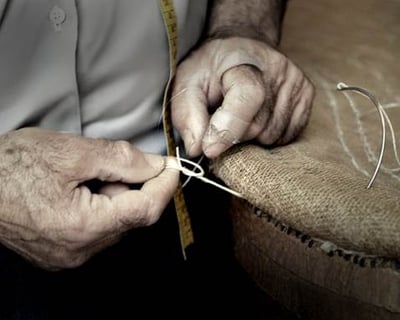 But there are certain types of defects that are either difficult to mend through product rework or simply aren’t worth the time or risk of damaging the product.
But there are certain types of defects that are either difficult to mend through product rework or simply aren’t worth the time or risk of damaging the product.
A minor defect (see Stage 1), for example, may be a bit unsightly on a product yet tedious or difficult to remove, such as a press mark left on a promotional hand towel. Excess material on an injection-molded item, a defect known as flash, may be worth removing if deemed serious enough. But removing flash can result in the introduction of more serious defects, as workers typically have to manually trim the excess material with a knife. Always weigh the costs and risks against the benefits of trying to mend quality issues before asking your supplier to rework a product.
There are also defects and other issues that are impossible to address through product rework, such as use of the wrong logo on an item or unacceptable fabric density in a home textile. For these types of problems, you may be faced with how to deal with unsellable goods.
Destroying unsellable goods
Importers sometimes resort to destroying an entire order of goods as a means of dealing with product defects or other issues that can’t be fixed and render their product unsellable.
Though rare, product destruction may be a necessary step to eliminate product defects. Most importers that destroy unsellable goods do so for a couple reasons:
- To protect their brand from substandard product. Destroying a shoddy product with your branding at the factory is often the best way to ensure it doesn’t end up being sold. Particularly in countries with notoriously relaxed intellectual property (IP) laws, like China, it’s not uncommon for such goods to end up being sold in a local market or elsewhere. In fact, the U.N. Office on Drugs and Crime reported that about 70 percent of all counterfeit goods seized worldwide come from China.
- To prevent competitors from buying and selling their inventory. A factory owner will likely prefer to sell defective goods and earn a higher margin than to “waste” them by discarding. They may sell your defective goods to a competitor unless you destroy them.
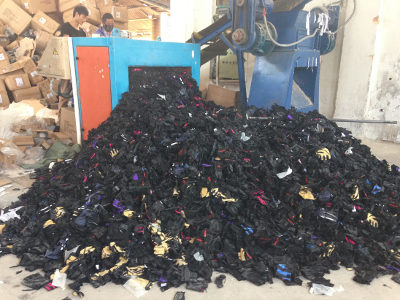 You might approach product destruction in a variety of ways, depending on the product type and the cost and convenience of destruction. In one case, factory workers destroyed fabric cushions with scissors. In another case, the factory and importer shared the cost of renting an industrial shredder to destroy 200,000 pairs of unsellable fitness gloves. One importer even rented a large roller to drive over an order of 30,000 pairs of promotional earbuds.
You might approach product destruction in a variety of ways, depending on the product type and the cost and convenience of destruction. In one case, factory workers destroyed fabric cushions with scissors. In another case, the factory and importer shared the cost of renting an industrial shredder to destroy 200,000 pairs of unsellable fitness gloves. One importer even rented a large roller to drive over an order of 30,000 pairs of promotional earbuds.
You can get fairly creative with your chosen destruction method. But one part of the practice that remains consistent is the need to have reliable oversight throughout the destruction process. For reasons stated earlier, suppliers have a vested interest in selling your products—whether to you or someone else—rather than destroying them. It’s best to have a qualified inspector or other trusted third-party present during destruction to verify that workers destroy all the goods in full.
Updating your QC checklists and product specifications
An important next step after discovering and addressing product defects and other quality issues is to update your QC documents. Product specs and QC checklists should always be current. This often means revising them regularly, even well after your supplier has manufactured and shipped the first order.
If you need your supplier to alter a product dimension or substitute a particular component, your checklist and related documents should reflect this change. You may also find that early inspection criteria are too strict or too lenient. Calibrating the criteria shown in your QC checklist will help you to refine subsequent inspections, which can improve both inspectors’ efficiency and your ability to interpret results.
Re-inspection and chargebacks
Unless you’ve elected to destroy an order, the last step after addressing any issues found during inspection is typically to re-inspect the same order to verify any corrective actions taken. If your supplier has agreed to rework defective units or replace them, you’ll normally need another pre-shipment inspection to confirm whether the order now meets your expectations.
 Depending on any agreement you reached with your supplier earlier (see Stage 1), you might expect them to pay a penalty. Sometimes when the result of an initial inspection is “fail” the importer will ask the supplier to cover the cost of re-inspection. If the finished goods the importer ultimately receives don’t meet a particular quality standard agreed upon earlier, such as major defects affecting no more than 10 percent of the order, the supplier may pay a penalty for that as well.
Depending on any agreement you reached with your supplier earlier (see Stage 1), you might expect them to pay a penalty. Sometimes when the result of an initial inspection is “fail” the importer will ask the supplier to cover the cost of re-inspection. If the finished goods the importer ultimately receives don’t meet a particular quality standard agreed upon earlier, such as major defects affecting no more than 10 percent of the order, the supplier may pay a penalty for that as well.
For larger importers and those with a longstanding relationship with a supplier, these chargebacks can effectively minimize product defects by holding their supplier accountable. But you’ll likely find these types of penalties difficult to enforce if you’re a smaller importer or are just starting to work with a particular supplier for the first time. Your best chance at holding your supplier accountable is to be upfront and set quality expectations as early as possible.
Many new importers are optimistic when placing their first order with a supplier and then get frustrated later when they expect their supplier to cover the cost of re-inspection or to refund substandard goods. But like most people, factory owners don’t like to be blindsided by a penalty they didn’t agree to pay for failure to meet an expectation they didn’t agree to meet (related: 3 Keys to Addressing Product Quality Issues with Your Supplier).
⇑ Back to Top
Conclusion
You might have noticed this three-stage process is somewhat cyclical—once you’ve completed Stage 3, you find yourself returning to certain parts of Stage 1, namely in refining your expectations. And this “rinse-and-repeat” style approach makes sense because quality improvement is often a gradual, repetitive and standardized process.
This process for limiting defects may seem simple. But it’s not always easy. It can be difficult to identify the best supplier for you, especially when you’re trying to decide among hundreds of thousands of prospects found on online search engines like Alibaba or Global Sources. And it’s not uncommon for suppliers to be somewhat uncooperative or unresponsive regarding certain steps to improving quality. Overseas suppliers often resist product inspection, for example.
If there’s one key suggestion we hope you’ll take away from this eBook, it’s that the best method for limiting product defects is prevention. By being open and honest with your supplier and establishing clear expectations upfront, you can avoid quality problems before they occur, which is almost always easier and more cost-effective than trying to correct them after production has started.
More Resources
Are you in need of a factory audit or product inspection services? Click the link below to download InTouch's service guide and explore how we can help you improve product quality!

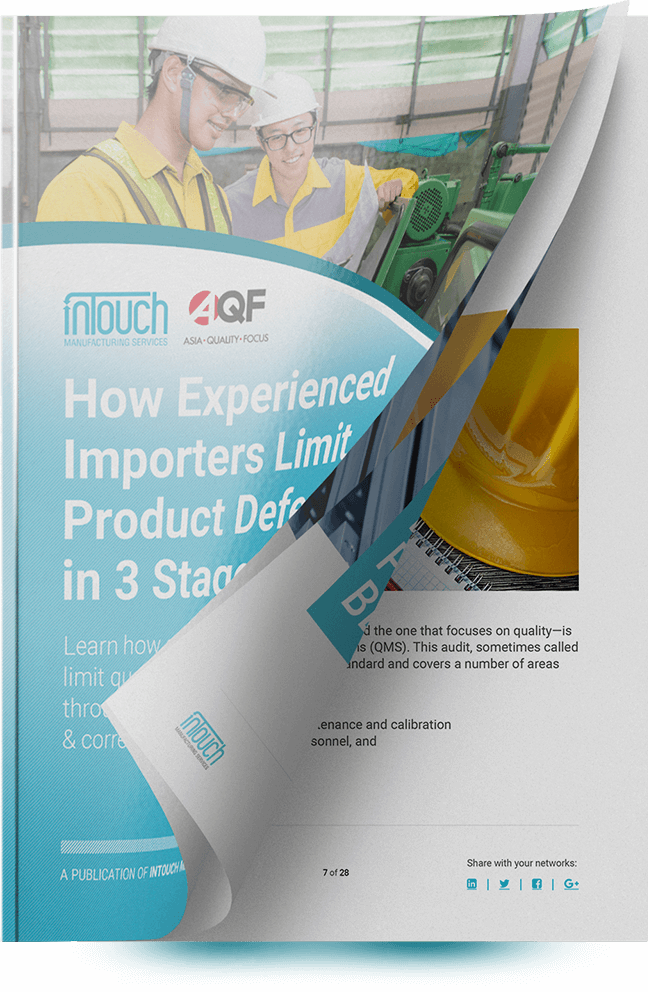





 When asked what is their greatest manufacturing challenge, 57 percent of all importers visiting our website (2700 out of 4719 respondents, as of April 2018) answered with “managing product quality”.
When asked what is their greatest manufacturing challenge, 57 percent of all importers visiting our website (2700 out of 4719 respondents, as of April 2018) answered with “managing product quality”.

 The results of auditing a potential supplier’s QMS help you to anticipate potential quality problems or risks before beginning production. For example, if the factory’s equipment is in disrepair, you’re probably not going to see consistently acceptable quality throughout an order. And if the factory’s QC staff have no clear procedures and lack adequate training, you probably won’t want to rely on them for inspecting your product before shipping.
The results of auditing a potential supplier’s QMS help you to anticipate potential quality problems or risks before beginning production. For example, if the factory’s equipment is in disrepair, you’re probably not going to see consistently acceptable quality throughout an order. And if the factory’s QC staff have no clear procedures and lack adequate training, you probably won’t want to rely on them for inspecting your product before shipping. Reviewing your product sample may be as simple as checking dimensions and verifying Pantone colors. But many importers find they need to send their sample to a certified lab for testing certain attributes of their product.
Reviewing your product sample may be as simple as checking dimensions and verifying Pantone colors. But many importers find they need to send their sample to a certified lab for testing certain attributes of their product. The main danger in someone mishandling your approved samples is that defects and nonconformities can occur in the finished goods when factory workers refer to the wrong sample for production. For example, if your latest approved sample reflects a recent change you made to the shape of a sneaker you’re manufacturing in China, factory workers may not produce the shoe to meet specifications without having your sample on hand. This can be especially problematic for footwear with injection-molded parts, as the whole order will likely need to be reproduced from scratch.
The main danger in someone mishandling your approved samples is that defects and nonconformities can occur in the finished goods when factory workers refer to the wrong sample for production. For example, if your latest approved sample reflects a recent change you made to the shape of a sneaker you’re manufacturing in China, factory workers may not produce the shoe to meet specifications without having your sample on hand. This can be especially problematic for footwear with injection-molded parts, as the whole order will likely need to be reproduced from scratch. Product requirements typically include various characteristics of an item, such as color, dimensions and material. The workers manufacturing your product and the inspectors checking it need these details to ensure the item meets specifications. You could easily end up receiving defective or noncomforming goods if the factory has to guess your expectations.
Product requirements typically include various characteristics of an item, such as color, dimensions and material. The workers manufacturing your product and the inspectors checking it need these details to ensure the item meets specifications. You could easily end up receiving defective or noncomforming goods if the factory has to guess your expectations. Classifying product defects makes it easier for you and your supplier to interpret inspection results and determine whether an order meets your quality standards. Sorting defects by class also allows for clearer acceptance sampling with acceptable quality levels (AQL), a method used in most product inspections (related:
Classifying product defects makes it easier for you and your supplier to interpret inspection results and determine whether an order meets your quality standards. Sorting defects by class also allows for clearer acceptance sampling with acceptable quality levels (AQL), a method used in most product inspections (related:  But in the same way you likely already clarify these basic order requirements in your PO, you could also include important details related to product quality and inspection. Many importers use their PO as an opportunity to clarify their requirement for pre-shipment inspection. Other importers will go one step further, specifying that they’ll require their supplier to pay a financial penalty for each defect of a certain type found in the finished goods.
But in the same way you likely already clarify these basic order requirements in your PO, you could also include important details related to product quality and inspection. Many importers use their PO as an opportunity to clarify their requirement for pre-shipment inspection. Other importers will go one step further, specifying that they’ll require their supplier to pay a financial penalty for each defect of a certain type found in the finished goods.
 The main benefit of DUPRO is that it gives you the opportunity to address any quality issues (see
The main benefit of DUPRO is that it gives you the opportunity to address any quality issues (see
 But there are certain types of defects that are either difficult to mend through product rework or simply aren’t worth the time or risk of damaging the product.
But there are certain types of defects that are either difficult to mend through product rework or simply aren’t worth the time or risk of damaging the product. You might approach product destruction in a variety of ways, depending on the product type and the cost and convenience of destruction. In one case, factory workers destroyed fabric cushions with scissors. In another case, the factory and importer shared the cost of renting an industrial shredder to destroy 200,000 pairs of unsellable fitness gloves. One importer even rented a large roller to drive over an order of 30,000 pairs of promotional earbuds.
You might approach product destruction in a variety of ways, depending on the product type and the cost and convenience of destruction. In one case, factory workers destroyed fabric cushions with scissors. In another case, the factory and importer shared the cost of renting an industrial shredder to destroy 200,000 pairs of unsellable fitness gloves. One importer even rented a large roller to drive over an order of 30,000 pairs of promotional earbuds. Depending on any agreement you reached with your supplier earlier (see
Depending on any agreement you reached with your supplier earlier (see